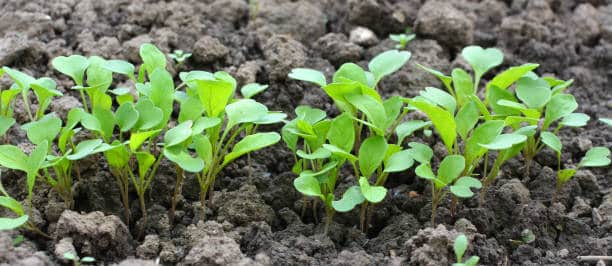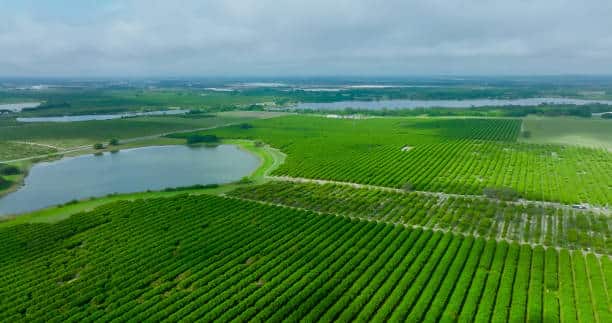Introduction
Future of Farming The farming area is going through an extraordinary shift, driven by progressions in man-made brainpower (artificial intelligence) and AI. These advancements vow to improve proficiency, efficiency, and maintainability in cultivating rehearses. From accuracy agribusiness to independent hardware, artificial intelligence is upsetting the manner in which we develop, make due, and collect harvests. This article investigates ten key regions where simulated intelligence is having a tremendous effect on horticulture, offering experiences into the fate of cultivating.
1. Accuracy Agribusiness: Improving Yield The executives

Accuracy farming includes utilizing innovation to screen and oversee crop fields at a granular level. Computer based intelligence assumes a critical part in this methodology by dissecting information from different sources, like satellite symbolism, robots, and ground sensors. These advances give ranchers nitty gritty data about soil conditions, dampness levels, and harvest wellbeing.
Man-made intelligence calculations can deal with this information to produce noteworthy experiences, empowering ranchers to apply the perfect proportion of water, composts, and pesticides unequivocally where and when required. This designated approach limits squander, lessens expenses, and upgrades crop yields.
2. Prescient Examination: Anticipating Harvest Yields and Market Patterns
Artificial intelligence controlled prescient examination devices are changing the manner in which ranchers plan their activities. By investigating verifiable information and current weather patterns, these instruments can estimate crop yields with high precision. Ranchers can utilize this data to arrive at informed conclusions about planting and collecting plans, capacity necessities, and market systems. Moreover, prescient examination can assist ranchers with expecting market patterns and cost vacillations, permitting them to advance their deals and productivity. This degree of foreknowledge is priceless in relieving chances and amplifying returns.
3. Independent Hardware: Reforming Ranch Tasks
Independent apparatus, like self-driving work vehicles and gatherers, is turning out to be progressively normal on present day ranches. These machines use man-made intelligence and AI calculations to explore fields, perform undertakings, and settle on continuous choices. Furnished with sensors and cameras, they can identify deterrents, screen crop conditions, and change their tasks appropriately.
The utilization of independent hardware diminishes the requirement for difficult work, increments functional productivity, and permits ranchers to oversee bigger areas of land with more prominent accuracy. This mechanical headway is especially useful in tending to work deficiencies and working on in general efficiency.
4. Crop Checking and Infection Discovery: Guaranteeing Solid Harvests
Man-made intelligence is likewise changing yield observing and infection discovery. Conventional techniques for recognizing plant infections and bugs frequently depend on manual investigations, which can be tedious and inclined to blunders. Man-made intelligence fueled frameworks, nonetheless, can break down pictures caught by robots or ground-based sensors to distinguish early indications of sicknesses and bug pervasions.
These frameworks use AI calculations to perceive examples and irregularities that might demonstrate an issue. Early recognition permits ranchers to make a brief move, decreasing yield misfortunes and guaranteeing better collects. Moreover, man-made intelligence can suggest designated medicines, further improving the viability of bug and infection the executives systems.
5. Soil Wellbeing and Supplement The board: Advancing Soil Conditions

Keeping up with soil wellbeing is basic for manageable cultivating, and simulated intelligence is assuming a critical part around here. Artificial intelligence fueled apparatuses can examine soil tests to survey supplement levels, pH balance, and microbial movement.
By coordinating this information with weather conditions gauges and yield development models, artificial intelligence can give proposals to ideal soil the board rehearses. This incorporates ideas for preparation, water system, and harvest turn to upgrade soil richness and design. Further developed soil wellbeing prompts better harvest execution, diminished natural effect, and long haul rural supportability.
6. Water The executives: Improving Water system Productivity
Water shortage is a developing worry in farming, making productive water the board fundamental. Man-made intelligence advancements are assisting ranchers with enhancing water system practices to save water and keep up with crop wellbeing. Simulated intelligence driven water system frameworks use sensors to screen soil dampness levels and weather patterns continuously.
In view of this information, AI calculations decide the exact measure of water required for each segment of the field. These frameworks can consequently change water system timetables and rates, guaranteeing that harvests get sufficient hydration without overwatering. Productive water the board moderates an essential asset as well as diminishes expenses and upgrades crop yields.
7. Production network Enhancement: Smoothing out Homestead to-Table Cycles
The agrarian inventory network is mind boggling, including numerous stages from creation to appropriation. Simulated intelligence is smoothing out these cycles by further developing strategies, stock administration, and request determining.
Computer based intelligence fueled stages can examine information from different sources to anticipate interest for various yields, enhance capacity conditions, and oversee transportation courses. This degree of improvement decreases squander, brings down costs, and guarantees that new produce arrives at purchasers all the more rapidly. Besides, artificial intelligence can upgrade recognizability all through the store network, furnishing shoppers with more noteworthy straightforwardness about the beginning and nature of their food.
8. Environmental Change Variation: Building Versatile Cultivating Frameworks
Environmental change presents huge difficulties to horticulture, influencing weather conditions, soil wellbeing, and yield efficiency. Computer based intelligence is assisting ranchers with adjusting to these progressions by giving devices to environment brilliant horticulture. AI models can break down environment information and anticipate what various situations could mean for cultivating activities.
These bits of knowledge empower ranchers to foster methodologies for moderating dangers, for example, choosing environment strong yield assortments, changing establishing plans, and carrying out preservation rehearses. By utilizing simulated intelligence, ranchers can construct stronger frameworks that can endure the vulnerabilities of an evolving environment.
9. Domesticated animals The board: Working on Creature Wellbeing and Efficiency
Computer based intelligence isn’t just changing harvest cultivating yet in addition altering domesticated animals the board. Simulated intelligence controlled frameworks can screen the wellbeing and conduct of animals through sensors and cameras. These frameworks track imperative signs, identify indications of disease, and screen taking care of examples.
AI calculations dissect this information to give experiences into creature wellbeing and efficiency. Ranchers can utilize this data to come to informed conclusions about taking care of, reproducing, and veterinary consideration. Upgraded animals the executives prompts worked on creature government assistance, higher efficiency, and more prominent productivity in meat and dairy creation.
10. Maintainable Cultivating Practices: Advancing Natural Stewardship

Maintainability is a critical concentration in present day farming, and artificial intelligence is assuming an imperative part in advancing harmless to the ecosystem rehearses. Simulated intelligence driven apparatuses can assist ranchers with diminishing the utilization of substance inputs, save regular assets, and limit their ecological impression.
For instance, accuracy farming procedures empowered by computer based intelligence take into consideration the exact use of composts and pesticides, decreasing spillover and contamination. Artificial intelligence can likewise uphold the reception of regenerative cultivating rehearses, for example, cover editing and no-till cultivating, which further develop soil wellbeing and sequester carbon. By coordinating artificial intelligence into their activities, ranchers can accomplish more noteworthy supportability and add to worldwide endeavors to battle environmental change.
Conclusion
The fate of cultivating is being formed by the quick headways in simulated intelligence and AI. These advancements are altering each part of agribusiness, from crop the executives and infection identification to water protection and store network improvement. By saddling the force of man-made intelligence, ranchers can upgrade efficiency, lessen costs, and advance supportability.
As computer based intelligence keeps on developing, its applications in farming will extend, offering new open doors for advancement and development. Embracing computer based intelligence driven arrangements is fundamental for building a tough and economical farming area that can address the difficulties of the 21st hundred years.

